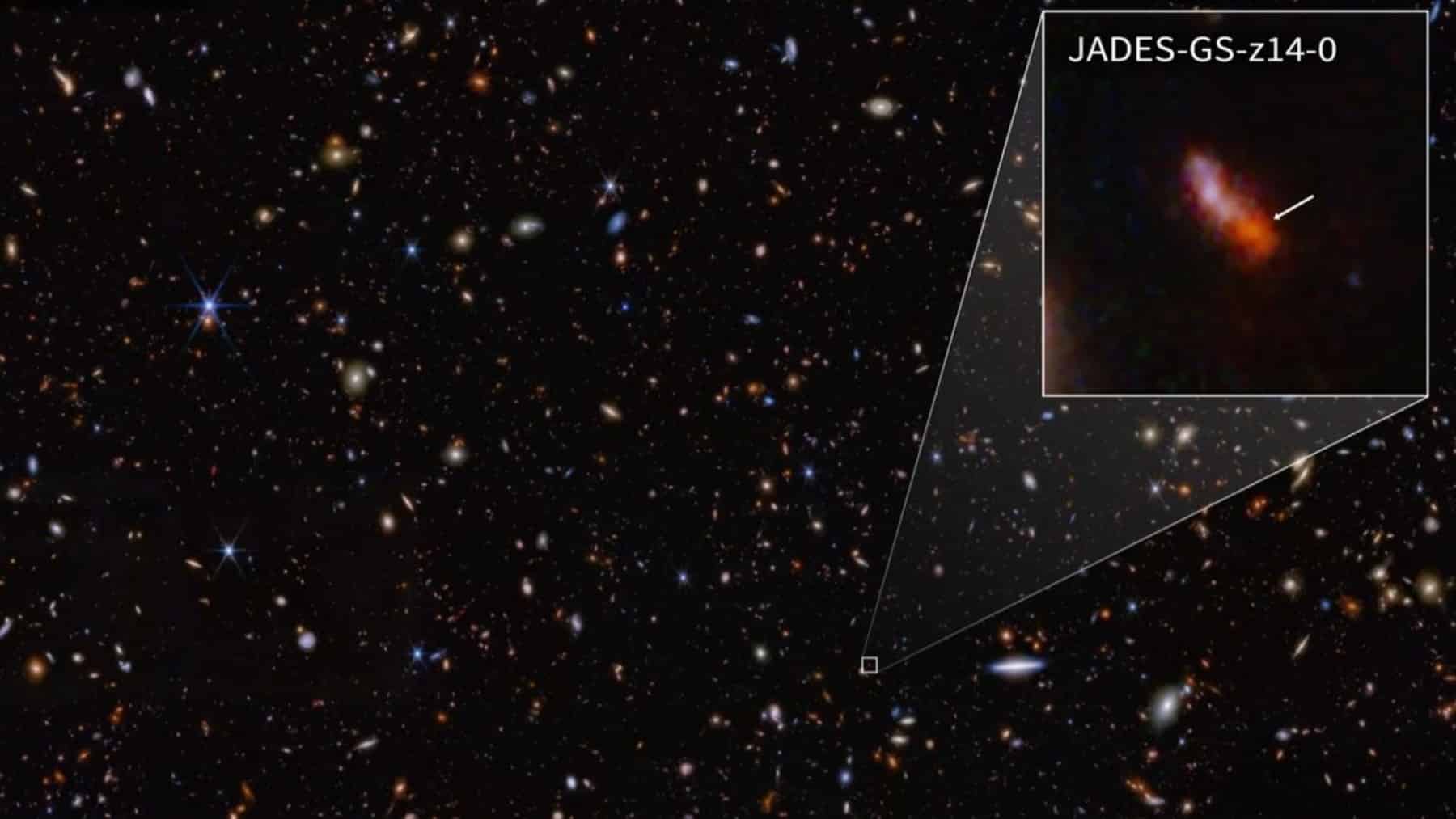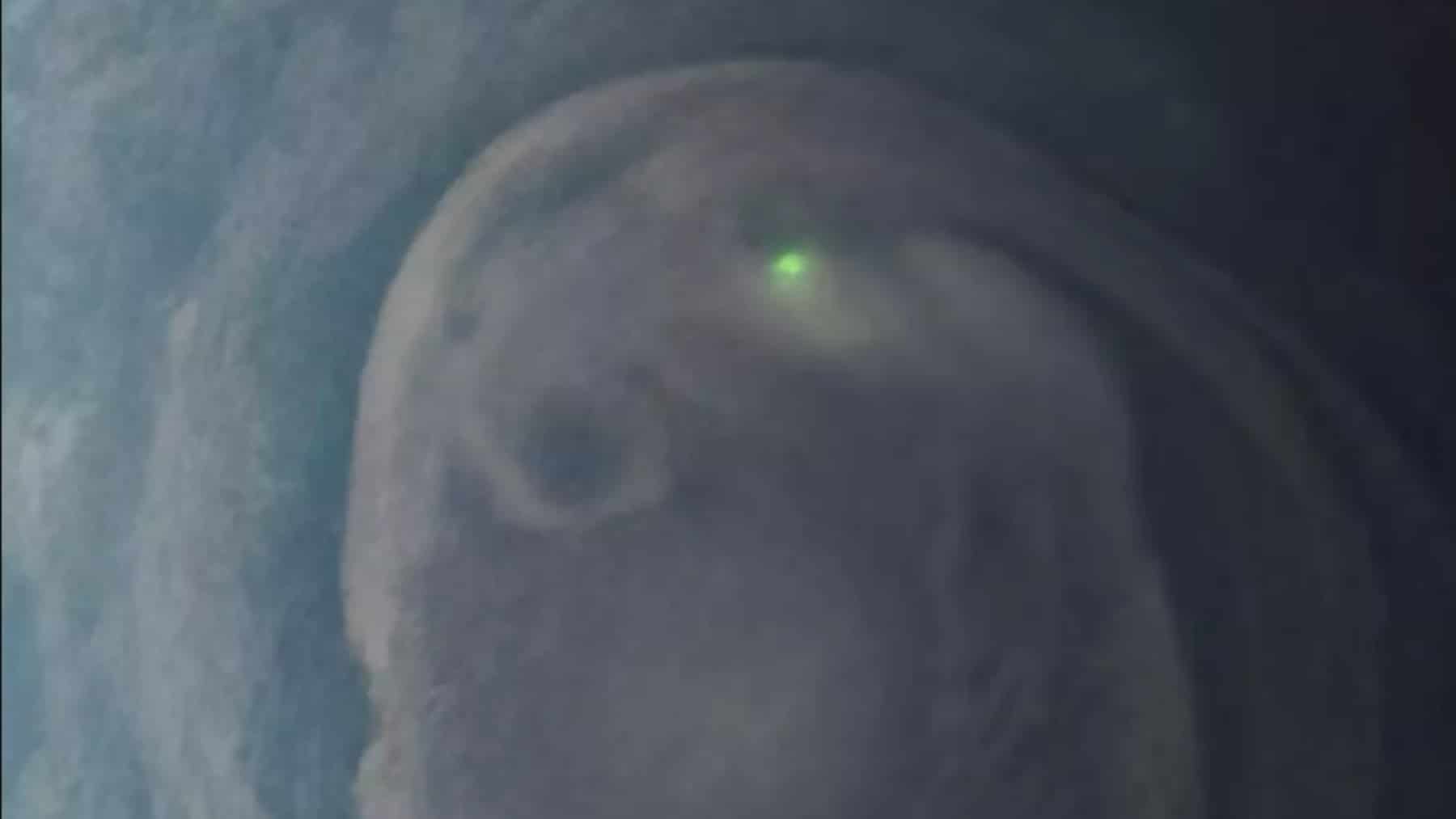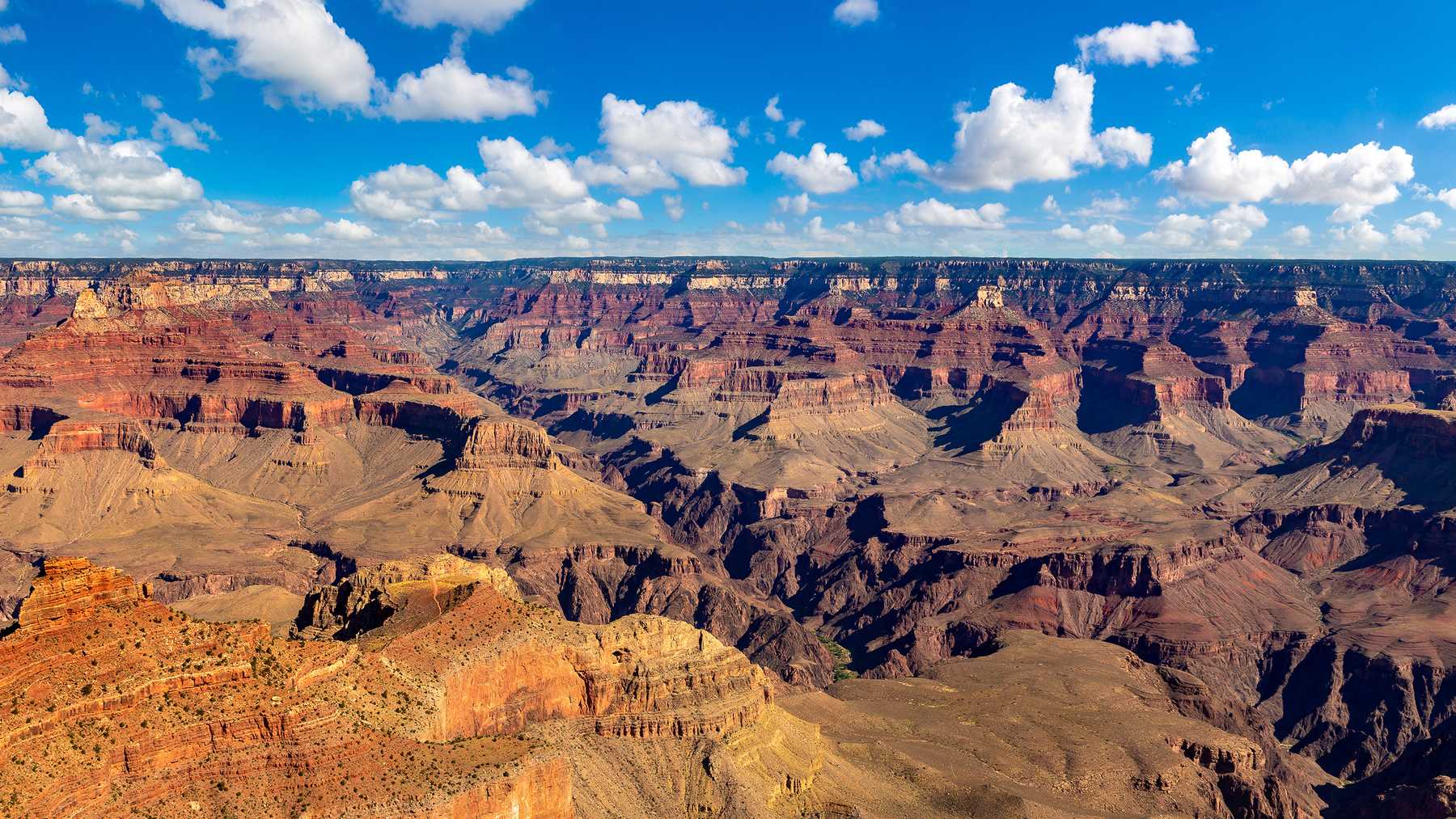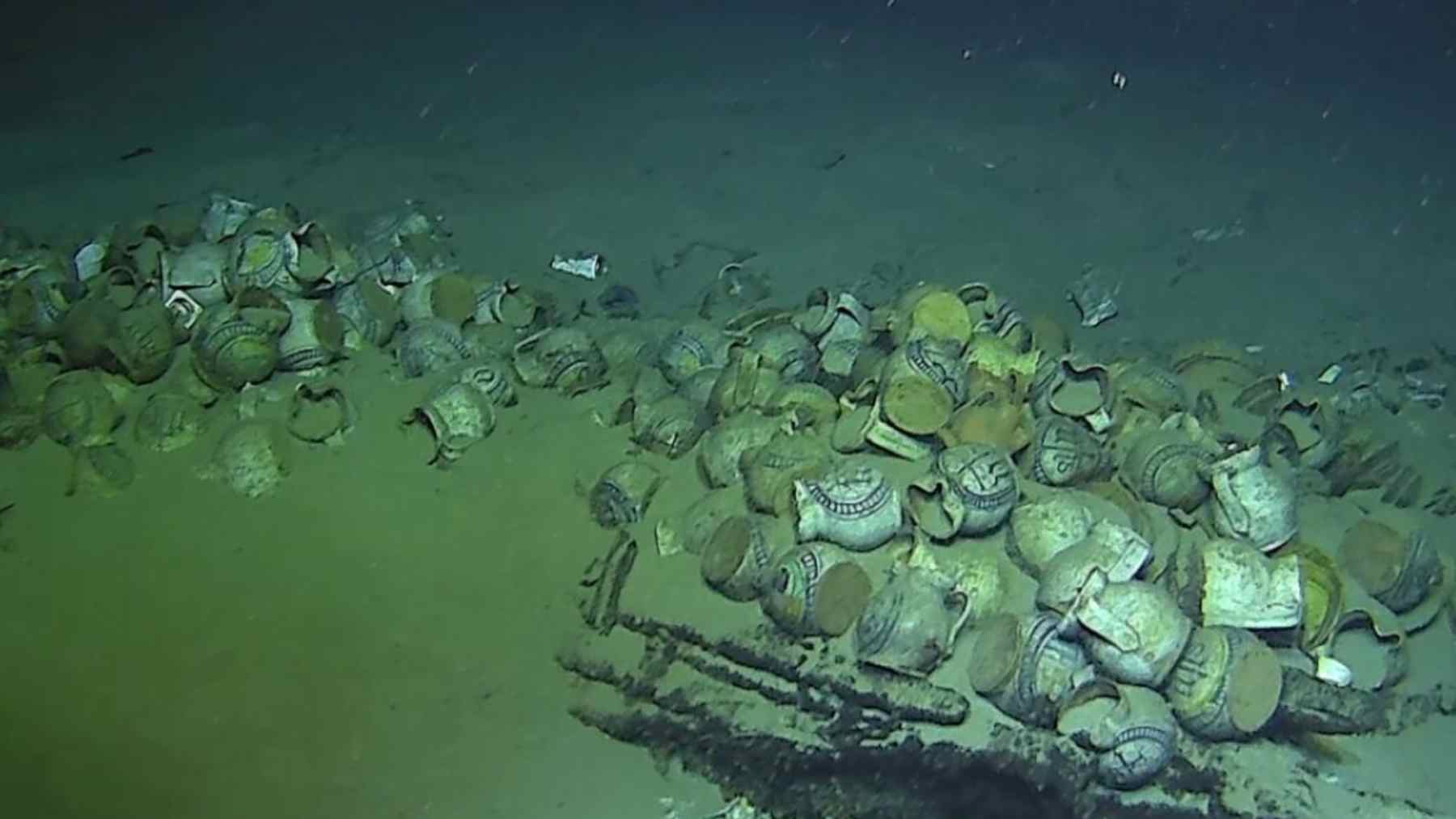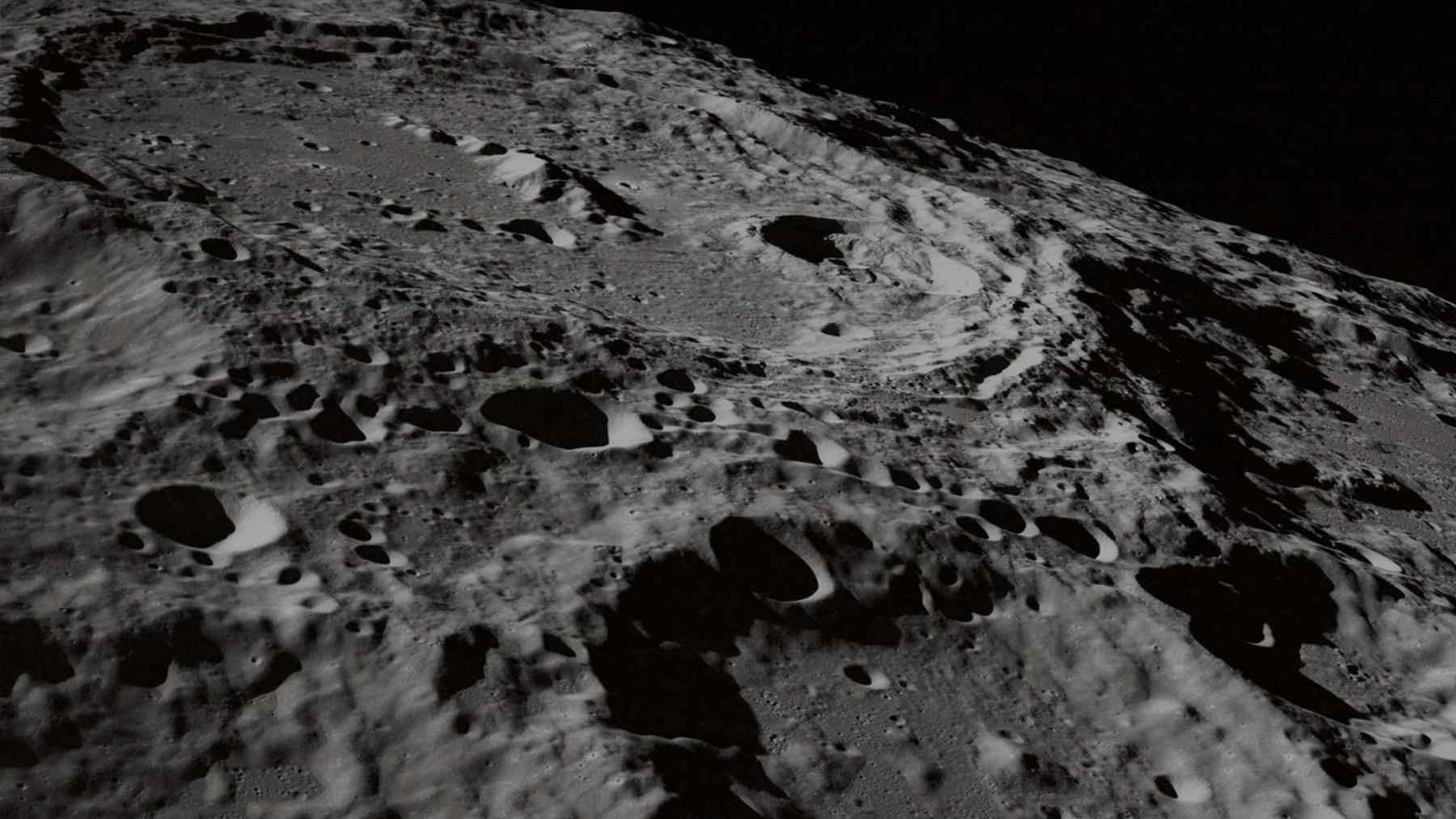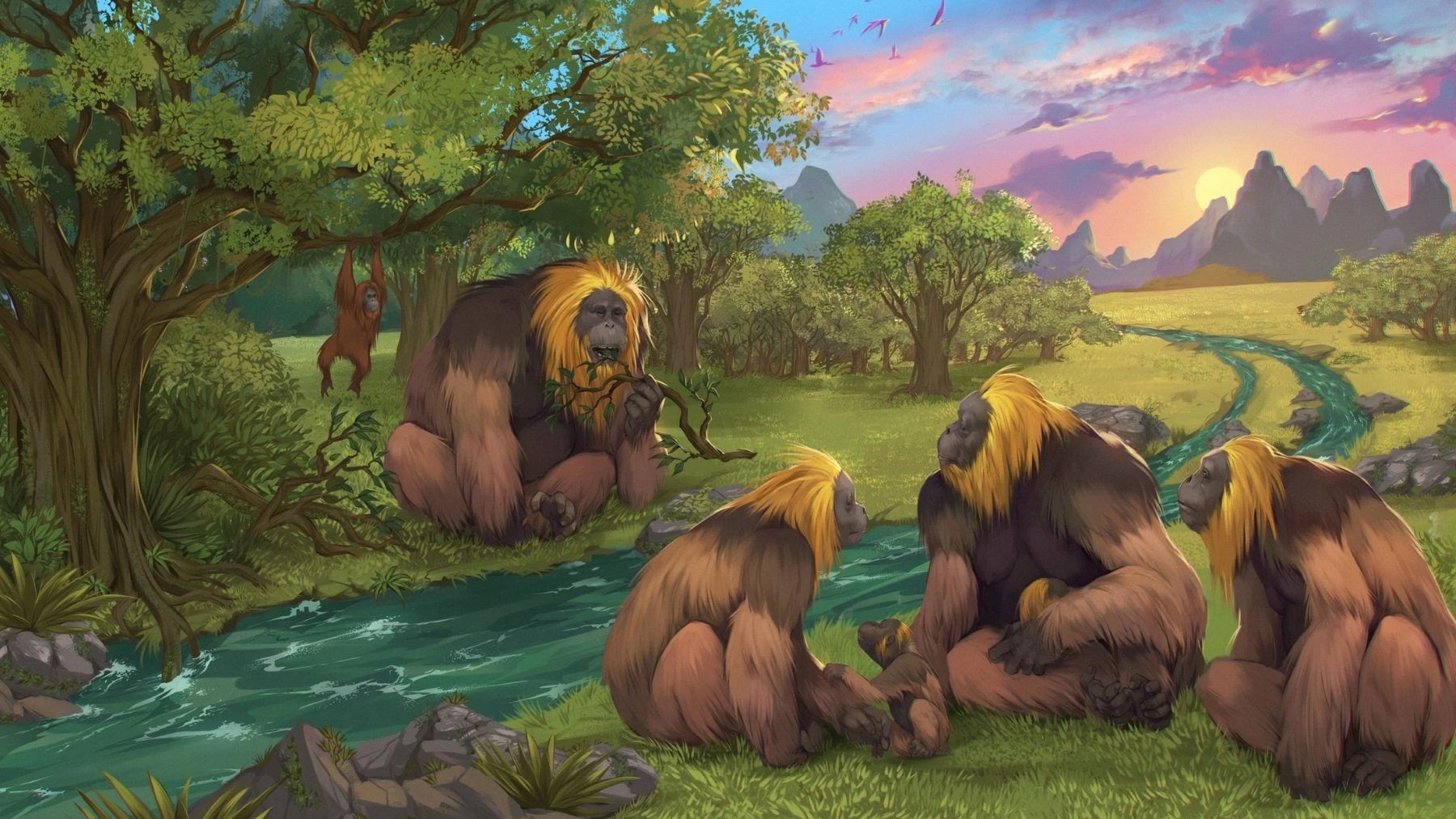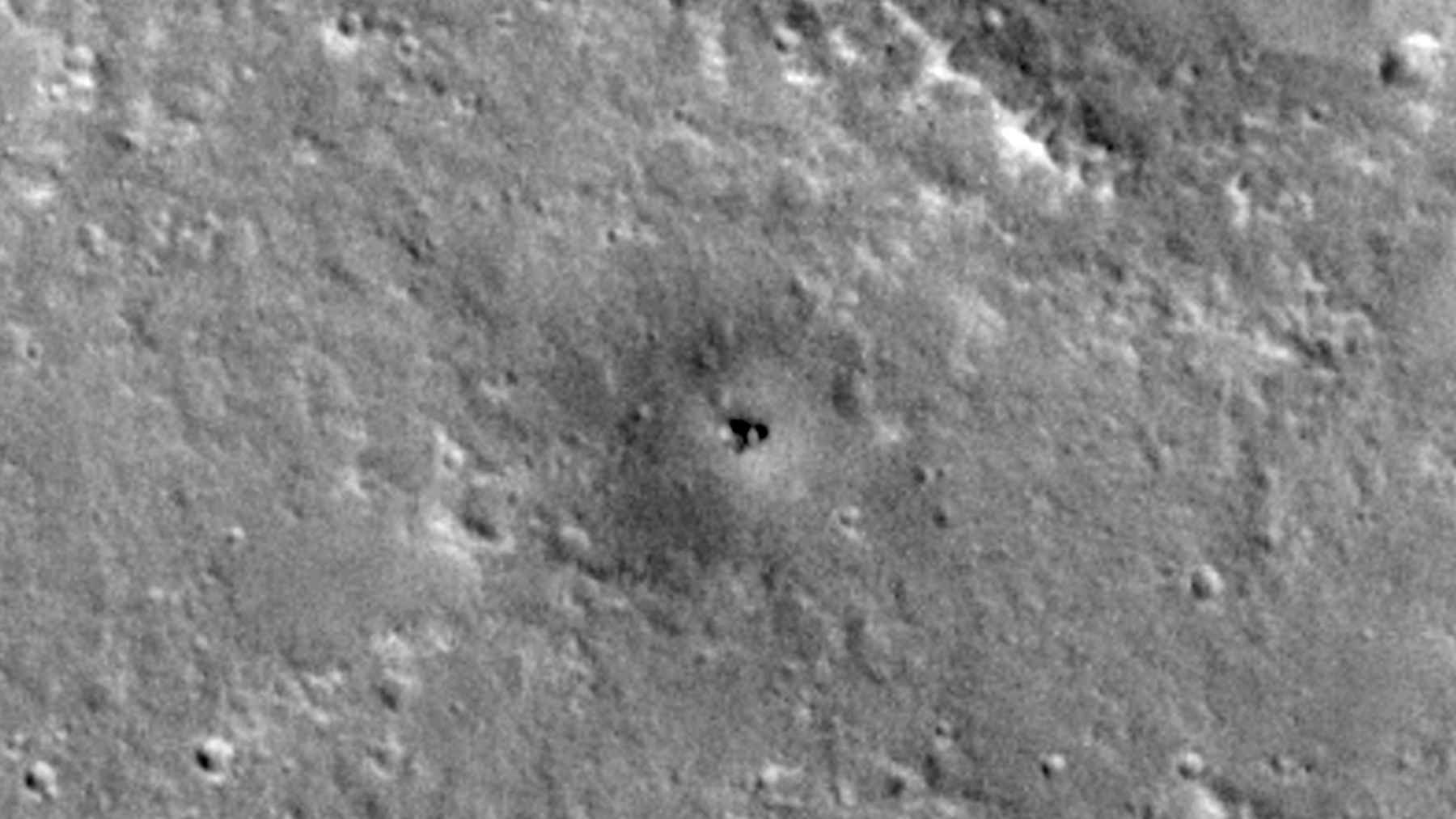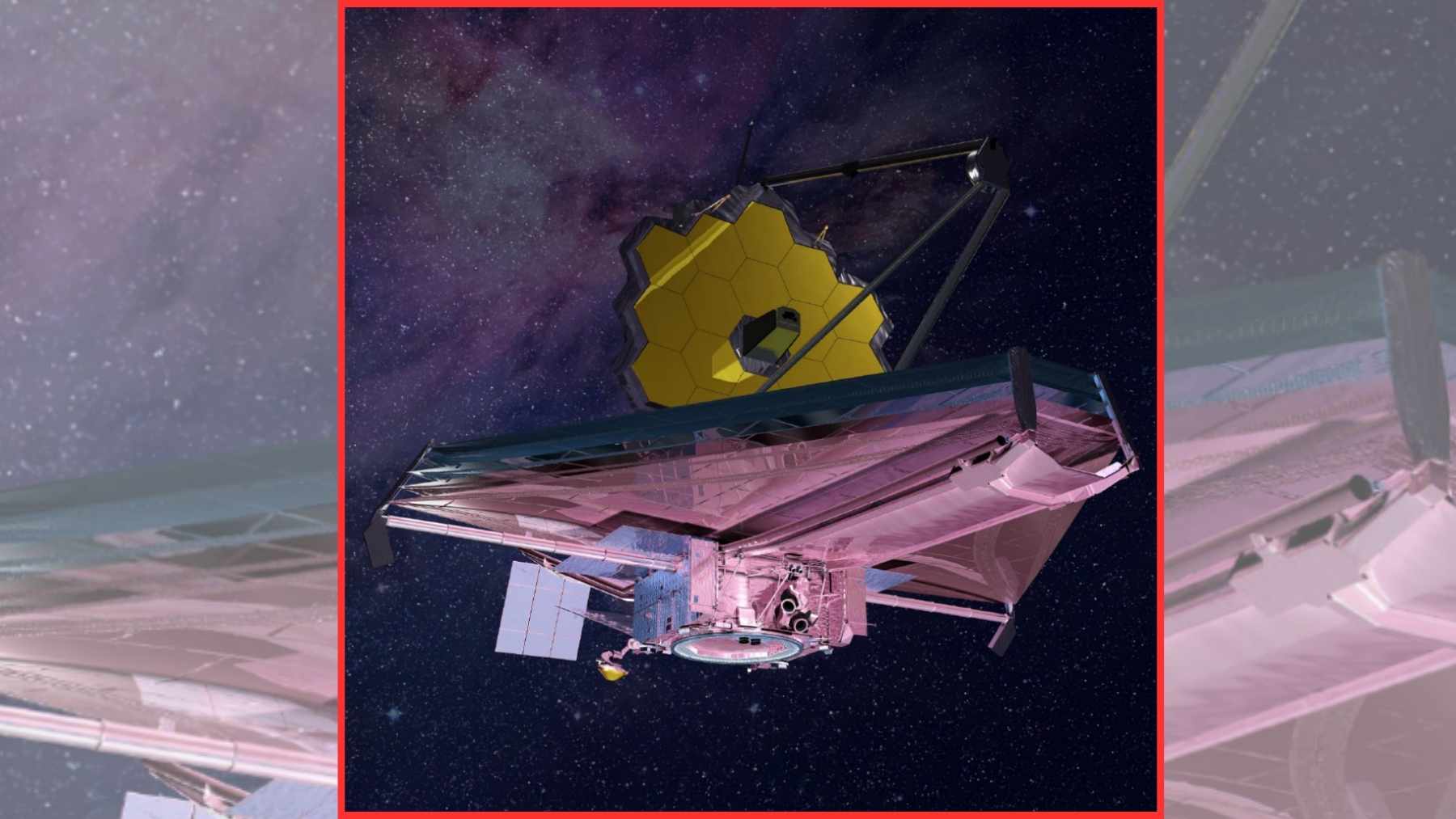To understand this news, let’s first imagine: imagine shining a flashlight in the middle of an absolute desert and, billions of years later, someone in another universe finally seeing that faint glow. Now, replace the flashlight with a primordial galaxy and the observer with one of the most sophisticated instruments ever created: the James Webb Space Telescope. That’s exactly what NASA discovered and announced: something that challenges our intuition about time, space, and the limits of what we can observe.
Have you seen the telescope that made all this possible?
Before discussing this discovery itself, we need to address the protagonist that made it all possible: the James Webb Space Telescope (JWST). Since its launch, it has been redefining astronomy. After all, if Hubble showed us the beauty of the cosmos, the Webb allows us to travel back in time, detecting light so ancient it was emitted even before the formation of the first planets.
How is this possible? The trick lies in physics: as the universe expands, the light from more distant galaxies is stretched, becoming redder—scientists call this phenomenon redshift. And the higher the redshift, the more distant (and ancient) the source of this light. The JWST was designed for precisely this: to detect these stretched, nearly imperceptible signals that escaped from the infancy of the cosmos.
So yes, it’s exceeding all expectations. Previous models predicted a very modest number of galaxies in the first 500 million years of the universe, but what we’re seeing with JWST is a much richer and much more accelerated tapestry.
Say hello to the galaxy MoM-z14
Now that we know what made the discovery possible, let’s talk about the discovery itself. In May of this year, NASA released one of those pieces of news that makes your eyes pop: they found a galaxy called MoM-z14 (which appeared as a point of light emitted just 280 million years after the Big Bang). This galaxy, nicknamed the “Mother of all early galaxies,” was detected at a record redshift of z = 14.44, the highest ever observed. Let’s put that in perspective: this galaxy is older than most fossils on Earth. Older than Saturn’s rings. Older than anything we can see with the naked eye in the sky… It’s simply stunning.
But the most surprising part isn’t this, but rather its chemical composition. This is because it contains elements like carbon and nitrogen. This indicates that other generations of stars existed before it, processing primordial hydrogen into heavier elements. What we’re saying is that, essentially, the universe was more active, faster, and more “mature” than previously assumed. According to Pieter van Dokkum of Yale University:
“These discoveries weren’t on the roadmap. JWST is showing that we underestimated the young universe — and maybe we still are”.
It seems we will need to review some concepts
And then you might be asking yourself: What does this change in practice? The answer is: a lot. The discovery of MoM-z14 forces us to rethink the entire models of the birth of the first galaxies. Until recently, the dominant theory said that large, bright galaxies took hundreds of millions of years to form. But now… we are seeing that this process may have happened much earlier, perhaps even before 200 million years after the Big Bang.
And not only that. MoM-z14 appears to have a very high star formation rate, despite being 50 times smaller than the Milky Way. And of course, this raises new questions: why are these galaxies forming so quickly? Where does so much energy come from? And most importantly: how many more are hidden beyond our current reach? It looks like the James Webb Telescope will have even more work to do because it just identified a “superstorm” in a distant galaxy.
